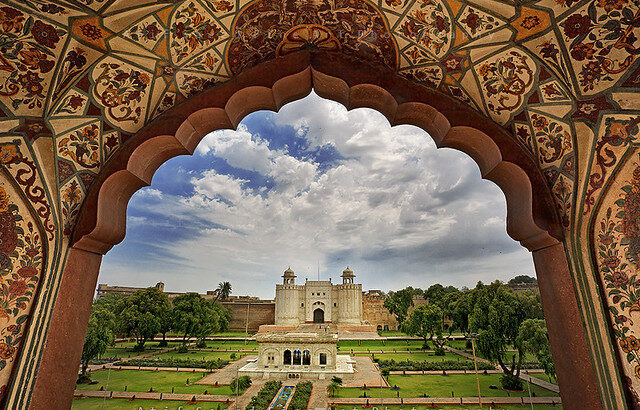LAHORE DURBAR
LAHORE DURBAR

Lahore was called Lava Puri in the ancient times. Named after Lava, the son of Lord Rama, the city of Lahore retained capital status during the 11th century for the Hindu Shahi Kingdom and later in the 16th century for the Mughal Empire.

- Name: Lahore was once known as Nokhar, which means “City of Lava” in Sanskrit.
- Founding: Lava is said to have founded Lahore.
- Temple: Lahore Fort has a vacant temple dedicated to Lava.
- Ramayana: The Ramayana epic tells the story of Lava and his twin brother Kusha, who founded the cities of Lavapuri (Lahore) and Kusha (Kasur), respectively.
Lahore’s history is complex and dates back thousands of years. The city has been called by many names throughout history, and there is no conclusive evidence of when it was founded. Some historians believe Lahore’s history goes back as far as 4,000 years.
Through the ages, Lahore gained the attention of many Kings ruling the subcontinent for its excellence in art and learning.
The Shahi Qila or the Lahore Fort is a reminiscent of the kingdoms past, that has been cradled in Lahore.
The Sikh Empire held Lahore as its capital city during 1802 to 1849. For 40 years Maharaja Ranjit Singh ruled Punjab from Lahore since occupying it in 1799.


Musamman Burj of the Lahore Fort was chosen to be used for his private and official purpose. His residence was the Sheesh Mahal chambers or the mirror pavilions of the Musamman Burj, built by the Mughal Emperor Shah Jahan.


Musamman Burj
The Musamman Burj is where the Lahore Durbar transacted its State business.
The Diwan-i-Am or the Hall of Audience is where the King held his public court through the morning till noon, attended by princes, ministers, nobles and civil and military officers. A golden throne is where the Maharaja sat, dressed in plain clothes and cross legged.


The provincial satraps and kardars’ reports were read out. Royal orders were given to be transcribed for final approval. Tributes and nazranas were accepted and khilawats (robes) and cash awards were handed out to supplicants as they were dismissed. The Maharaja conducted business on horseback or under the shade of a tree during tours and expeditions. While inspecting troops or fighting a battle, he dictated orders to the provincial governors with him.
The Maharaja’s expeditious manner of work in his Durbar was witnessed firsthand by Alexander Burnes, on his visit to Lahore on February 1831 and he gave the following testimony:

“I never quit the presence of a native of Asia with such impressions as I left the man; without education and without a guide, he conducts all affairs of the kingdom with surprising energy and vigour, yet wields his power with a moderation quite unprecedented in an eastern prince.”
In 1846, Lt. Col. Steinbach paraphrased in his book ‘The Punjab’: “The treasures of Ranjit Singh…amounted to about eight crore rupees in cash, the same number…in pounds sterling with jewels, shawls, horses, elephants… It is doubtful if any court in Europe possesses such valuable jewels as the court of Lahore”

